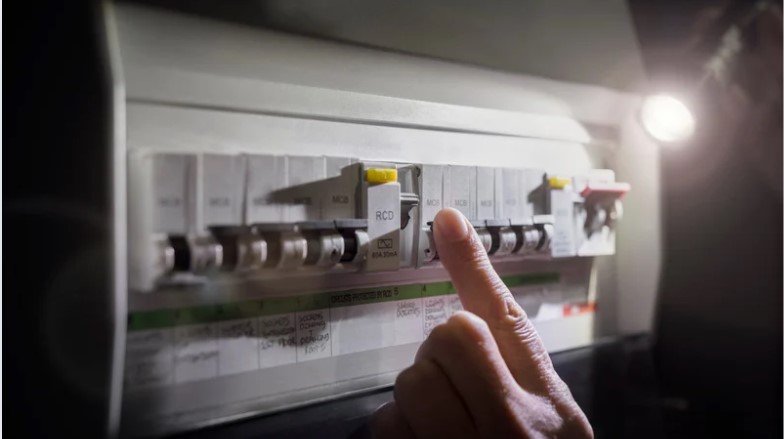Buying a house is an extraordinary milestone worth celebrating. In today’s fast-paced real estate market, closing on your dream home is no small feat. You’ve made it through the relentless property searches, tricky negotiations, mortgage approvals, and the final nerve-wracking signing process. Now you may be tempted to sit back, relax, and savor your new space.
But don’t get too comfortable just yet! Owning a new home comes with a new set of responsibilities to ensure it’s safe, secure, and fully prepared for your life ahead. To help you navigate this new chapter with confidence and ease, we’ve outlined the crucial steps you should take immediately after buying a house. Follow these guidelines to protect your investment, establish a secure environment, and start making this house your home.
What to Do After Buying a House
1. Establish Your New Address:
One of the first and most crucial steps after purchasing a new home is updating your address. This involves more than just notifying the USPS; it’s about ensuring that all your critical communications follow you to your new residence. From bills and bank statements to insurance and personal letters, updating your address promptly keeps your life running smoothly without disruption. This task extends beyond mail; it includes informing your employer, banks, creditors, and any subscription services to prevent any lapse in services or missed payments. It’s a simple yet significant move that sets the stage for your new beginning.
Pro Tip: Consider using online services that facilitate address updating across multiple platforms at once. This can streamline the process, making it more efficient and ensuring you don’t overlook any critical notifications.
2. Deep Clean Your New Home:
Before you settle into your new home, a thorough deep clean is essential. This initial cleaning is not just about aesthetics; it’s about health and starting fresh. Removing the remnants and dirt left behind by previous occupants helps in setting a clean slate. Tackling every corner, from the attic to the basement, and not forgetting outdoor areas like gutters and decks, ensures that your new living space not only looks welcoming but is also safe and hygienic. A clean home is the perfect canvas for beginning this new chapter of your life.
Pro Tip: For an efficient deep clean, consider scheduling it when the house is still empty. Cleaning without obstacles or furniture makes the process quicker and more thorough, allowing you to focus on turning your new house into a home.
3. Get to Know Your Property:
Your new house is full of potential, but it’s also unfamiliar territory. Before diving into decorating or major renovations, take time to familiarize yourself with the property. Identify key features like the circuit breaker panel, water shut-off valve, and gas lines to understand how the essential systems function. Knowing where these critical controls are located can be a lifesaver during emergencies. Learn the quirks of your appliances and check warranties to ensure they’re in good working order. Additionally, map out any crawl spaces, attic access points, and areas where wildlife or pests might find their way in.
Pro Tip: Keep a notebook or digital file with detailed information about your property, including appliance manuals and a labeled circuit map. This can be invaluable when something needs fixing or troubleshooting.
4. Meet the Neighbors:
A new home isn’t just about the structure; it’s also about the community. Getting to know your neighbors can open doors to helpful local resources and build a sense of belonging. Whether you introduce yourself with a friendly hello or a simple gift, fostering these relationships can lead to useful recommendations for local businesses, trustworthy tradespeople, or restaurants. Neighbors can also be an extra set of eyes when you’re away and offer support during times of need. Plus, sharing local insights can help you settle in and feel like part of the community sooner.
Pro Tip: Host a casual housewarming or barbecue to break the ice with neighbors. Alternatively, ask for advice on local services or events, as many people are happy to share their knowledge and extend a warm welcome to newcomers.
5. Understand Your Mortgage:
Your mortgage is one of the most important financial commitments you’ll undertake as a homeowner. Once you’ve moved into your new house, take the time to thoroughly understand the terms of your mortgage. Review the monthly payment amounts, due dates, interest rate, and payment schedule. Familiarize yourself with any penalties for late or missed payments, as well as prepayment options if you plan to pay off your loan early. Setting up automatic payments with your lender can help prevent missed deadlines and keep your credit in good standing. Moreover, if your mortgage allows refinancing, stay informed about current interest rates and your eligibility to renegotiate terms for potential savings.
Pro Tip: Maintain a digital or physical record of your mortgage documents and lender contact details. This will help you quickly access crucial information if there are payment disputes or if you need to update your terms.

6. Celebrate Your New Home:
After the stress of closing and the hustle of moving in, it’s essential to take a moment to celebrate your new home. This is a significant achievement, and it deserves recognition. Host a housewarming party, throw a cozy dinner, or simply have a quiet evening to soak in the atmosphere of your new surroundings. Marking this milestone with friends and family helps create new memories and strengthens the connection you have with your home. Personalize it with decorations, photos, and furniture that reflect your style. Whether you opt for a small or large gathering, the point is to enjoy the fruits of your labor and set the tone for this exciting new chapter.
Pro Tip: Document this joyful occasion with photos or notes. Create a scrapbook or photo album dedicated to your new home journey, from the initial search to the final decoration. This will help you appreciate how far you’ve come and provide a sense of accomplishment.
7. Connect the Utilities:
Before you can settle into your new home comfortably, it’s essential to connect all necessary utilities like electricity, gas, water, and internet. This should ideally be done before moving in to avoid inconveniences such as unpacking in the dark or not having hot water for a shower. Research your local utility providers and the process required to set up new services. For some utilities, like electricity and gas, you’ll need to schedule a connection appointment ahead of time. Ensure that the previous owners have cleared their outstanding bills so that you aren’t hit with any unexpected charges.
Pro Tip: Make a checklist of all the utilities you’ll need and contact their customer support teams directly to confirm your scheduled connection date. This will help you spot any errors before they cause a disruption in service.
8. Secure Your Home:
Securing your new home is one of the first steps to creating a safe and stress-free environment. Change the locks to prevent the previous owners or anyone else from accessing your house. Update the garage codes and reprogram any electronic locks or security systems with new, unique passwords. If your new home doesn’t have an alarm system, consider installing one to add an extra layer of protection. Don’t forget about other entry points like windows, especially those on the ground floor.
Pro Tip: Keep an eye out for any hidden spare keys that the previous owner might have forgotten to remove. Check under rocks, door frames, or near flower pots, and take measures to keep these areas secure.
9. Check Safety Devices:
A new home should feel like a sanctuary, and a critical part of ensuring safety is verifying that all your smoke and carbon monoxide detectors are functioning properly. Replace old batteries, and consider upgrading units if they are outdated or unreliable. Safety devices should be strategically placed near bedrooms, kitchens, and laundry rooms, where the risk of fires or gas leaks is higher. Additionally, check for fire extinguishers and ensure they are charged and accessible. If your local fire department provides free inspections, take advantage of this service to confirm that your home is equipped to protect you and your family.
Pro Tip: Set a recurring reminder to check batteries every six months and consider using interconnected smoke detectors that sound the alarm across the entire house when triggered.
10. Review or Purchase a Home Warranty:
A home warranty can provide peace of mind, especially in the first year of homeownership. If you received a home warranty as part of the purchase agreement, thoroughly review its coverage to understand what’s included and the process for filing a claim. Focus on appliances, HVAC systems, and other major components that could be costly to repair or replace. If a warranty wasn’t included, shop around to find a plan tailored to your needs and budget. Prioritize coverage for high-ticket items that are prone to breakdowns, and compare prices and service reviews among warranty providers.
Pro Tip: When choosing a warranty plan, check customer reviews and ask if the company offers coverage for specific items like pools, septic systems, or air conditioning units, which may require additional protection.
11. Locate Circuit Box and Emergency Shut-Offs:
Before you’re fully settled into your new home, it’s crucial to familiarize yourself with key infrastructure like the circuit breaker box and emergency shut-off valves. Knowing the location of these controls can help you act quickly during emergencies like electrical outages, gas leaks, or water pipe bursts. The circuit breaker box should be labeled to identify which circuits correspond to specific rooms and appliances. If not labeled, take the time to map it out to avoid confusion. Locate water, gas, and other utility shut-offs and learn how to operate them correctly.
Pro Tip: Keep a flashlight, gloves, and basic tools near the circuit box and emergency shut-offs so that you’re always prepared to act swiftly.

12. Refresh Paint and Flooring:
A new coat of paint and refreshed flooring can transform the look and feel of your new home, making it uniquely yours. Paint the walls to suit your style and create a cohesive color scheme throughout the rooms. Tackle this project before moving your furniture in to save yourself the hassle of covering or moving items later. When it comes to flooring, inspect the condition of existing carpets, tiles, or hardwoods, and decide if a simple cleaning will suffice or if replacements are necessary. Fresh paint and clean floors provide an immediate sense of renewal and make it easier to start settling in.
Pro Tip: For an even, professional finish, remember to apply a primer before painting over dark colors or stains. This will ensure that your final coat of paint is vibrant and consistent.
13. Use Inspection Report as a To-Do List:
Your home inspection report is a valuable resource that can help you proactively manage repairs and maintenance tasks. It provides an itemized snapshot of potential problem areas that could impact your home’s safety, functionality, and value. Start by prioritizing issues identified in the report, from most to least urgent. Safety concerns like faulty wiring or leaky plumbing should be addressed immediately, while aesthetic improvements can be planned for later. By using the inspection report as a comprehensive to-do list, you can systematically ensure that your home remains well-maintained.
Pro Tip: Set reminders for regular checkups on key systems identified in the inspection report, like HVAC or plumbing, to catch small issues before they become major repairs.
14. Create a Maintenance Schedule:
Maintaining a home is a long-term endeavor, but it doesn’t have to be overwhelming. Create a realistic maintenance schedule that lists periodic tasks, such as changing air filters, cleaning gutters, and pressure washing the exterior. Group these tasks by season to help you stay organized and to distribute the workload evenly throughout the year. An effective schedule ensures that your home’s systems run smoothly and minimizes unexpected repairs. Additionally, budget for regular maintenance and unexpected costs to avoid unpleasant financial surprises.
Pro Tip: Keep a digital checklist or calendar with recurring maintenance tasks and set reminders for each. This will help you build a habit of consistent home upkeep, ensuring nothing slips through the cracks.
Start Your Journey to Happy Homeowner
Your new home is not just a building; it’s a space where cherished memories will be made and shared for years to come. While moving in and settling down can be a busy process, establishing a clear plan for your new residence ensures a smoother transition. Start by reviewing your inspection report to identify critical areas needing attention, then use it as a proactive guide for future repairs. Establishing a comprehensive maintenance schedule is equally important to keep everything in good shape and reduce costly surprises.
Your home should be a sanctuary that grows with you, providing comfort, security, and joy. As you embark on this exciting journey, take the necessary steps to turn your house into home sweet home, and celebrate the milestones along the way.
If you need any help in buying a new house in Northern Wisconsin, and surrounding areas contact Visions First Realty, LLC. Visions First Realty, LLC is a small business real estate agency providing professional real estate services with integrity and trust throughout Northern Wisconsin, and surrounding areas.


